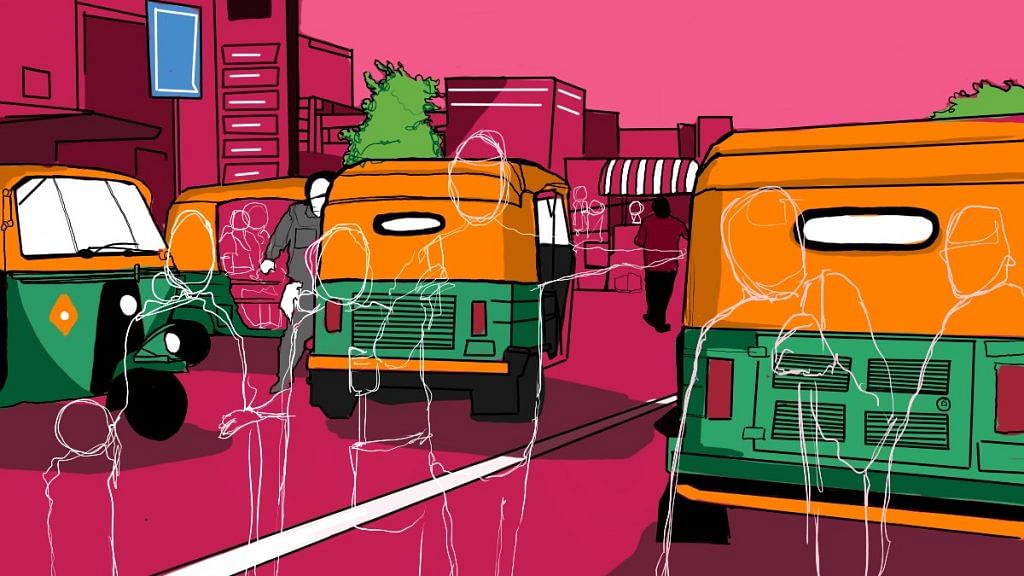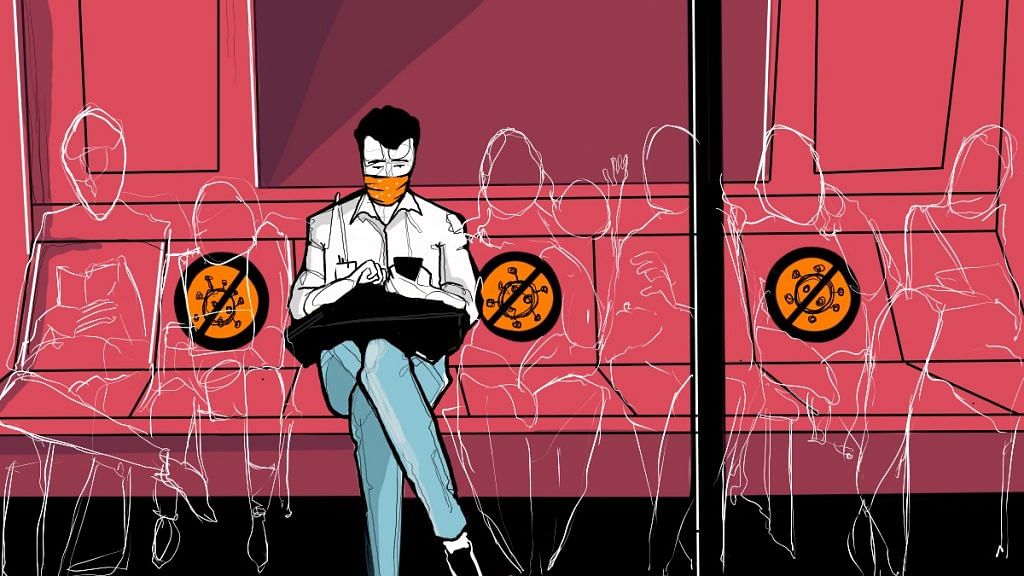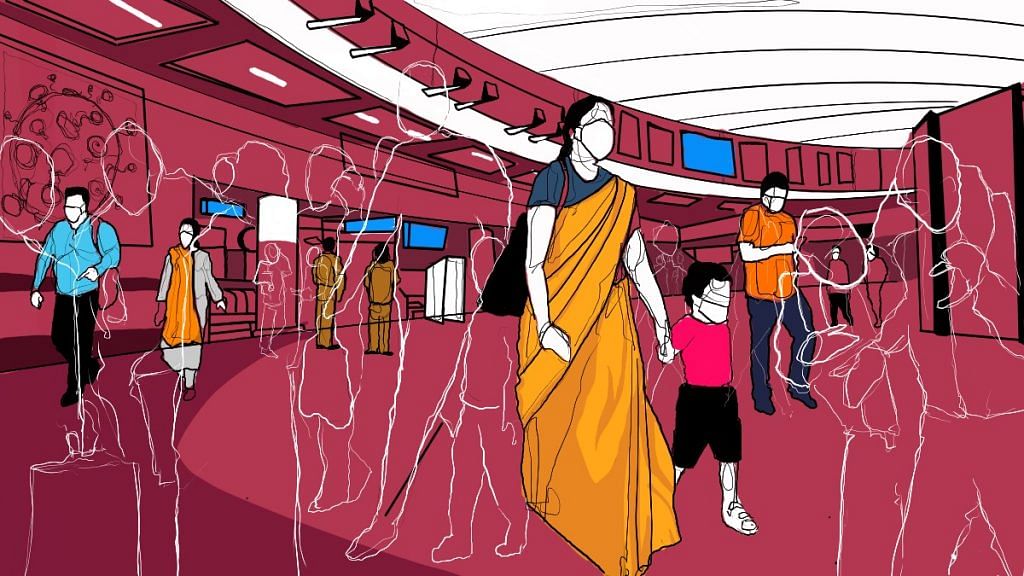New Delhi: The Delhi Metro resumed services on the Yellow Line Monday, after an almost six-month-long forced shutdown due to the Covid-19 pandemic. Currently, the government has only allowed the 48.8 km-long HUDA City Centre (Gurugram) to Samaypur Badli (north Delhi) line to open, in two phases of four hours each.
At a time when Delhi is seeing a surge in Covid-19 cases again after a brief lull, the reopening of at least one line of the capital’s transport lifeline seems like a small step towards normalcy of some sort. The Delhi Metro Rail Corporation (DMRC) conducted several trial runs and issued fresh guidelines to ensure passengers’ safety.
This visual journalist travelled from AIIMS to Rajiv Chowk on Day 1, Monday, to see for himself how much the world had changed since the metro last ran on 22 March, and imagine how different things at certain points would’ve been were it not for the coronavirus.
More uniforms than common people
The first phase of operation for the Delhi Metro runs from 7 am to 11 am. Around 9 am Monday, there was already a rush of vehicles on the Outer Ring Road as this writer headed to the AIIMS metro station.
A fleet of clumsily parked autorickshaws waited outside the station, but there was hardly any movement or noise around them. Arun Mohanty, who has been driving autos for 20 years now, said they weren’t expecting many passengers to come through the metro.

“People are still unsure about the metro; there are hardly any passengers to and from metro stations today,” he said.
At most stations, entry and exit is limited to just one gate, with four CISF personnel standing guard at each open gate to make sure passengers don’t crowd. Social distancing demarcations have been made on the floors, after which passengers have to go through a three-step sanitisation process (thermal reading, baggage disinfection and hand sanitisation), and then on to the ‘cashless’ ticket counter.
Sanitation workers and volunteers have been posted on every platform to manage the crowd. But there were more men and women in uniforms than common people, and the silence on the platform was uncanny.
The trains Monday ran mostly empty and quiet, as every coach had less than 10 people sitting at a distance to each other. Every alternate seat was marked with a sticker reminding the passengers to “maintain social distancing”.

The coach this writer was in remained empty throughout the journey across the seven stations from AIIMS to Rajiv Chowk, which took approximately about 25 minutes. It was a far cry from the days before coronavirus when bustling crowds would pack in and the train would take one from South Delhi to the heart of the national capital in nearly half that time.
Rajiv Chowk, the busiest station in normal circumstances, saw seven people emerge from the train at 11 am as the first phase came to an end.

Street vendors gathered near the gate every time someone walked out. Mukesh, a 17-year-old who sells balloons and toys outside Rajiv Chowk, said he was expecting more people to turn up soon.
“Metro is like a lifeline to many like us; we rushed to the stations as early as possible, hoping to get some business. I hope things will get better when they start operating the rest of the lines,” he said, with a dusty mask hanging below his chin.
Starting tomorrow (9 September), the Blue and Pink line of the Delhi Metro will open up, connecting people from Dwaraka Sector 21 to Noida Electronic City and Vaishali, and Majlis Park to Shiv Vihar. According to the DMRC’s plan, all lines of the metro will resume operating normally from 12 September onwards.
Also read: ‘Choosing a slow death’: Life in Delhi on the most polluted day of the season






